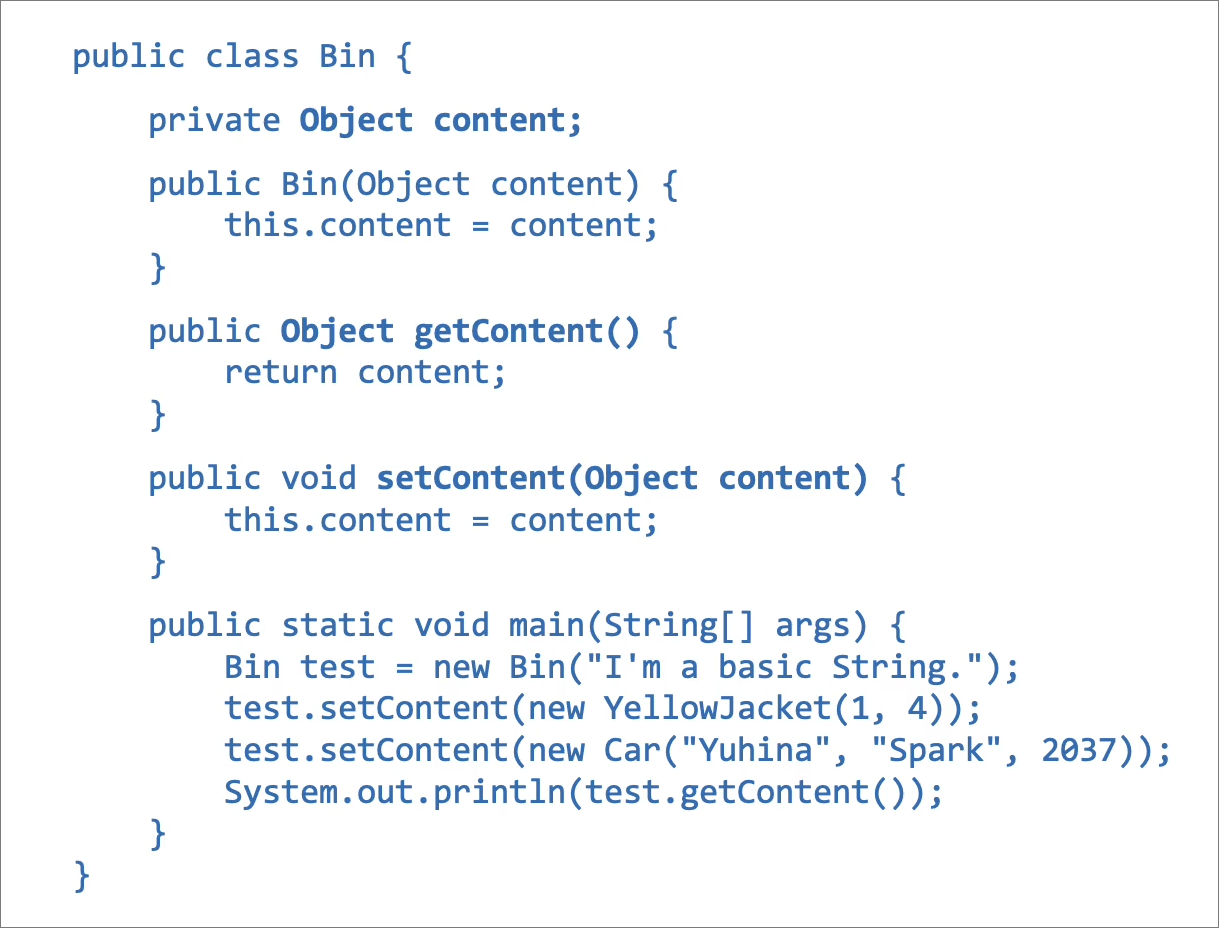The List Interface:
- List Interface: Declares methods that can be used on lists
- Implemented by the ArrayList and LinkedList Classes
- Lists can add, remove, and contain data
- Can search through a list for a specific piece of data
- Some methods of the List Interface:
- add(): Appends a element to the end of a list
- clear(): Removes all elements from a list
- contains(): Returns if an element is in a list
- remove(): Deletes an element from a list
- size(): returns the number of elements in a list
ArrayLists:
ArrayList Basics:
-
A high-level way to work with arrays as lists
- An implementation of the list interface with an array being the underlying data structure
- Internally declares an object array called elementData
- All methods are done on elementData
- Creates a new array object when elementData is too large
-
Works similarly to an array
- Can call methods on the ArrayList
- Can be traversed using a for-each loop
-
Sized is not fixed and can increase/decrease
-
Autoboxing: Converting a primitive type to its object counterpart
- Ex. int converts to an Integer object
- Happens automatically
- Allows primitives to be used in ArrayLists
Creating an ArrayList:
- ArrayList is a Generic class
- Can be created with or without constraints
- A specified initial length can be declared for both ArrayList types:
- Initial length is 10 if not defined
ArrayList arrayListName = new ArrayList(length);- Creating a raw type ArrayList:
- Created without constraints or parameters
- Can refer to any Java object
- Each initial reference is null
ArrayList arrayListName = new ArrayList(); - Creating a parameterized type ArrayList:
- Created with a specific type declared
- Internal array is still an object array
- Simply restricts what parameters List methods can have
//Two legal ways: ArrayList<elementType> arrayListName = new ArrayList<elementType>(); ArrayList<elementType> arrayListName = new ArrayList<>();
LinkedLists:
Basics of Generic Classes:
- Used to avoid type issues at runtime
- Don’t need to cast before calling methods
- To turn a class into a generic, add a Type parameter to the end of the class header
- Can have multiple type parameters
//Single type parameter public class className<T> { } //Multiple type parameters public class className<X,Y,Z> { } - Types can be bounded using extends
- Used for both inheritance and interfaces
- Can have multiple restrictions
//Only objects that are a subclass of otherClassName can be input public class className<T extends otherClassName> { } //Only objects that implement Comparable can be input public class className<T extends Comparable> { } //Only objects that are a subclass of otherClassName and implement both Comparable and otherInterfaceName can be input public class className<T extends otherClassName & Comparable & otherInterfaceName> { } - Example of non-generic vs generic:
- Without generics:

- With generics:

- Without generics:
LinkedList Basics:
- Node: An element of a LinkedList
- A private class within the LinkedList Class
- Located in random areas of memory (Unlike an ArrayList)
- Contains both the data and a pointed to the next node in the list
- Head: A instance variable that is a reference to the first node in a LinkedList
- Is null if the LinkedList is empty
- LinkedList Class: Contains the Head, Private Node Class, and all the methods that can be called on the LinkedList
Node Class:
private class Node<E> {
E data;
Node<E> next;
Node(E, data, Node<E> next) {
this.data = data;
this.next = next;
}
}Adding Data to the Front:
//Creates new node that points to the old head while making head point to the newly created node
head = new Node<E>(data, head);Traversal:
//Moving through the entire list
Node current = head;
while (current != null) {
current = current.next;
}Adding data to the Rear:
//Creating new end node
Node<E> node = new Node<E>(newData, null);
//Creating current placeholder for traversal
Node<E> current = head;
//Making the node the head if the LinkedList is empty
if (head == null) {
head = node;
}
//If LinkedList isn't empty
else {
while (current.next != null) {
current = current.next;
}
}
//Adding the data to the rear
current.next = node;Removing Data:
- To delete data, you must take the pointer from the previous node and point it to the next one after the deleted node
- Delete the pointer from the previous node to the deleted node
Remove From Front:
//Checks if LinkedList is empty
if (isEmpty()) {
return null;
}
E removedData = head.data;
head = head.next;
return removedData;Remove From Rear:
E removedData;
if (isEmpty()) {
removedData = null;
}
else if (head.next == null) {
removedData = head.data;
head = null;
}
else {
Node<E> current = head;
while (current.next.next != null) {
current = current.next;
}
removedData = current.next.data;
current.next = null;
}
return removedData;ArrayList vs LinkedList:
- ArrayLists are limited by Arrays
- Must create a new array when resizing
- Has an inital size
- Needs to shift elements when adding anywhere other than the end of a list
- ArrayLists can get data faster than a LinkedList